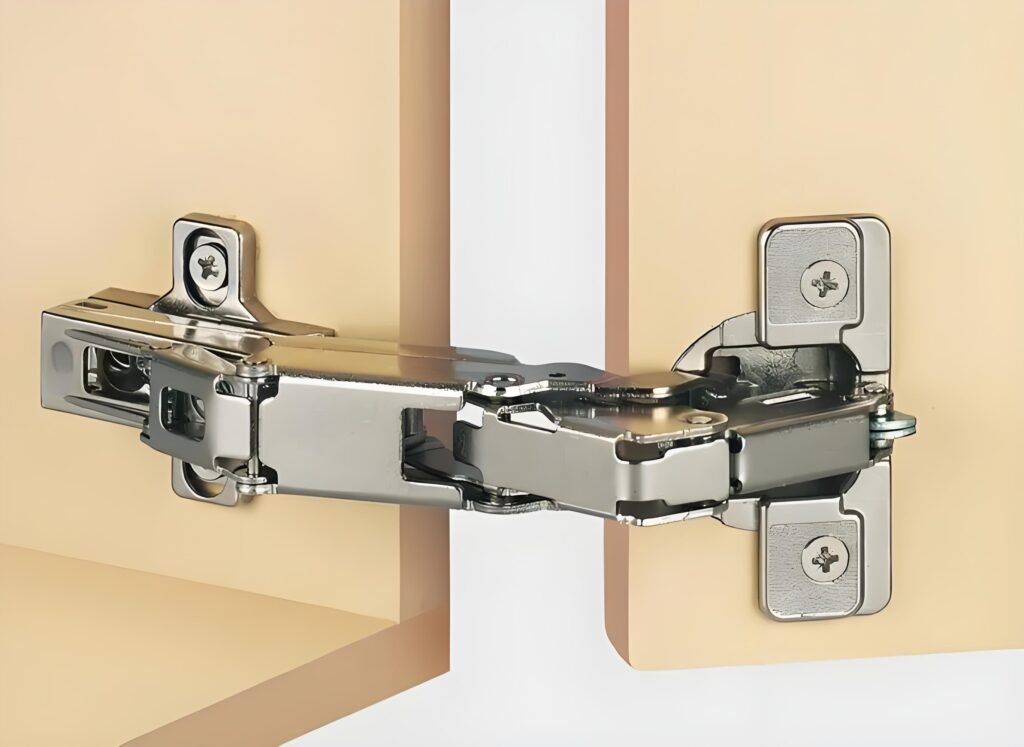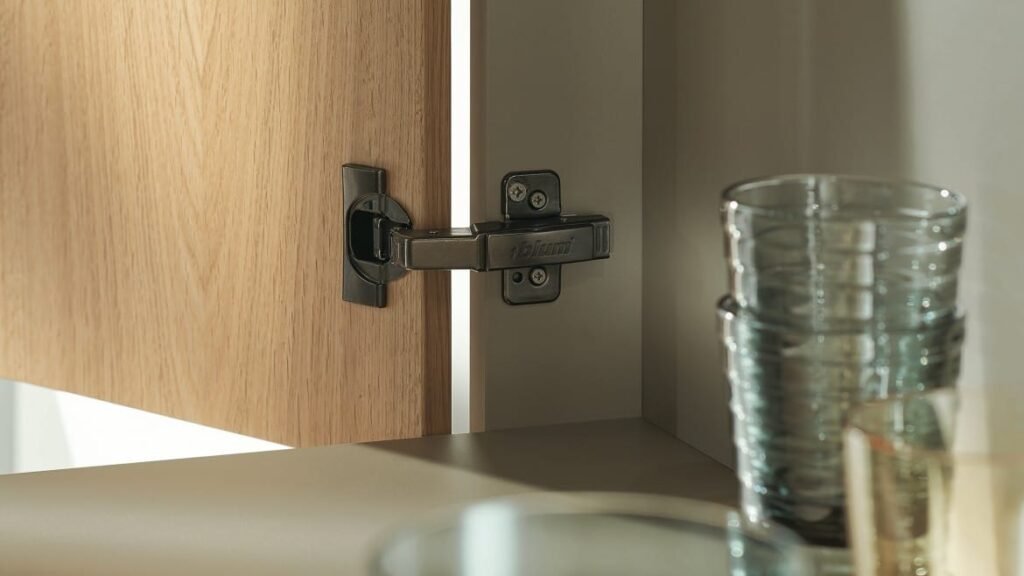
125° Removable Soft Close Hinges - BN
Main Material: Cold-rolled steel/Q235
Finish: Nickel Plated
Opening hinge: 125°
Dia. of hinge cup: 35mm
Depth of hinge cup: 9.7mm
Product thickness: 1.0mm
Door (K) dimension: 14-22mm
Door thickness: 14-25mm
Optional 3D adjustment, plastic buckle, for 25mm side board, without oil cylinder.
Application Segment
Wooden Doors


Our Services

MOQ Offered
We provide flexible minimum order quantities, allowing you to start small and scale up as needed.

Large Inventory
Ensuring Ample Stock for Immediate Shipment, Eliminating Wait Times for Production.

Complete Specifications
We refine various specifications of hinges according to different usage scenarios.
AOLISHENG manufactures soft close hinges that meet standards, offering customized services and solutions to help your business succeed.
Why Choose AOLISHENG
Rich Experience
With years of soft close hinges production experience, we have a team of professionals specializing in hinge design, manufacturing, and management.
Leading Production Capacity
We possess CNC machining for heavy-duty applications, wire-cutting machines, automated balancing, pressing equipment, and electroplating production lines for hinge manufacturing.
Quality Assurance
All hinges undergo over 48 hours of salt spray testing and are subjected to more than 80,000 cycles of open-close testing with appropriate door weights, meeting the quality standards of QB/T2189-1995.
Mass Production Capability
With over 10,000 square meters of production facilities and thousands of square meters dedicated to electroplating workshops, we ensure a large-scale supply of hinges.
We Look Forward To Your Contact
AOLISHENG is your trusted global partner for high-quality drawer slide and hinges production, with strategic factories worldwide and professional local service teams. Partnering with AOLISHENG ensures efficient project delivery, robust supply chains, expert technical support, and a thriving customer base.
FAQ
How to tell if a hinge is soft close?
Soft Close Hinges can usually be identified in the following ways:
1. Check the design and label of the hinge
Labels and logos: Many soft close hinges will have obvious brand logos or model labels indicating that they have soft closing functions. Check the back or side of the hinge for such a label.
Product Description: If you buy a new hinge, you can check the packaging or product manual, which usually indicates whether it is a soft close hinge.
2. Check the internal structure of the hinge
Buffer: Soft close hinges usually contain a buffer or spring mechanism inside to slow down the closing speed of the door. Although it is difficult to see directly from the appearance, you can tell by touching and feeling the action of the hinge.
Sliding and closing method: Gently open the door, then close it, and notice whether the door slows down and closes smoothly when it is close to fully closed. This is a clear feature of soft close hinges.
3. Test the closing effect
Closing experience: Open the door by hand and close it slowly, and observe the action of the door when it is close to fully closed. Soft close hinges will slow down the door in the final stage and close almost silently, while ordinary hinges may close directly and produce a loud banging sound.
Door action: Do you feel any cushioning and resistance when closing the door? If you feel the door closing slowly and smoothly, this usually indicates that the hinge is a soft-closing type.
4. Check the installation instructions
Installation manual: If there is an installation manual for the hinge, its function is usually mentioned. The manual of the soft close hinges will describe its soft-closing mechanism and adjustment in detail.
Manufacturer website: Visit the official website of the hinge manufacturer to find the model and specifications of your hinge to confirm whether it has a soft-closing function.
5. Ask a professional
Contact the supplier: If you are still unsure, you can contact the hinge supplier or a professional with the model and description of the hinge and ask them to confirm whether it is a soft close hinge.
Seek professional advice: If you are not familiar with the function or installation of hinges, you can consult a professional door and window installer who can help identify the hinge type and provide advice.
Summary
Identifying soft close hinges can be done by looking at the hinge label, checking the internal structure, testing the closing effect, checking the installation instructions, and consulting a professional. If the hinge has a slow and smooth closing function and reduces the impact sound, it is likely a soft close hinge.
Why is Soft Close so expensive?
The high cost of soft close is often caused by the following factors:
1. Technical complexity
Buffering mechanism: Soft close involves complex buffering and damping technology to achieve a smooth and quiet closing effect. This technology increases manufacturing difficulty and cost.
Precision engineering: Soft close hinges and slides require precision engineering design and high-quality materials to ensure performance and durability.
2. Materials and manufacturing
High-quality materials: Soft close hinges and slides usually use high-quality materials such as wear-resistant metals and durable plastics to improve product life and performance.
Precision manufacturing: The manufacturing process of soft-close hardware is delicate, involving complex machining and assembly processes, which increases production costs.
3. R&D costs
Technical research and development: Developing and improving soft-close technology requires a lot of R&D resources, including testing and improving product design.
Patent fees: Some soft-close technologies may be protected by patents, and the related patent fees will also affect the final price of the product.
4. Market demand and positioning
High-end market: Soft close functions are usually positioned in the high-end market, and consumers are willing to pay a premium for higher comfort and quality.
Brand value: Soft-close products from well-known brands are usually priced higher because the brand’s added value and reputation affect the market pricing of the product.
5. Installation and commissioning
Complex installation: The installation of a soft-close system may require professional technicians to ensure the correct configuration and function of the system.
Additional adjustments: Meticulous adjustments and commissioning are required to ensure the smooth operation of the soft-close function.
6. Long-term savings
Durability: Despite the higher initial cost, the soft-close function may save repair and replacement costs in the long run by reducing wear and extending the life of the product.
Summary
The high cost of the soft-close function is mainly determined by factors such as technical complexity, materials and manufacturing, R&D costs, market demand, and brand value. Despite the higher price, the smooth closing experience and long-term durability it provides are generally considered to be worth the investment.
Can soft close hinges be adjusted?
Soft Close hinges are usually adjustable to ensure that the door closes as expected. Here are some common adjustment options and methods:
1. Adjust the soft close feature
Buffer force: Some soft close hinges allow you to adjust the buffer force to control the speed and softness of the door when closing. This can be achieved by adjusting a special screw or knob on the hinge.
Door closing angle: Adjust the hinge settings to ensure that the door can smoothly contact the door frame when fully closed to prevent the door from closing too early or too late.
2. Adjust the door alignment
Horizontal and vertical alignment: Adjusting the position of the hinge can correct the horizontal and vertical alignment of the door to ensure that the door is fully aligned when closed.
Depth adjustment: Some hinges offer a depth adjustment function to change the position of the door relative to the door frame to achieve a better closing effect.
3. Position and angle adjustment
Hinge position: Adjust the mounting position of the hinge so that the door can open and close more smoothly. It may be necessary to re-drill or adjust the existing hole position.
Door clearance: By adjusting the hinges, you can change the clearance between the door and the door frame to ensure that the door closes tightly when closed.
4. Adjustment tools
Adjustment tools: You usually need a screwdriver or other special tools to make these adjustments. Make sure you use the correct tools to avoid damaging the hinges or the door.
Manufacturer instructions: Refer to the manufacturer’s instructions for specific adjustment methods and precautions.
5. Common adjustment problems
Post-adjustment inspection: After completing the adjustment, test the door’s closing effect to ensure that the soft closing function is working properly. If the adjustment is not correct, the door may still make noise or close unevenly.
Maintenance and inspection: Check the hinges regularly to ensure that the buffer mechanism and adjustment settings are still effective. If problems are found, readjustment or repair may be required.
Summary
Soft close hinges are usually adjustable to optimize the closing effect of the door. The adjustment range includes the strength of the soft-close function, the alignment, position, and angle of the door, etc. Make adjustments according to the manufacturer’s instructions and use the appropriate tools to ensure the hinges work properly and the door closes smoothly. It is also a good choice to seek professional help if you encounter difficulties.
